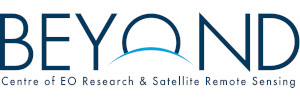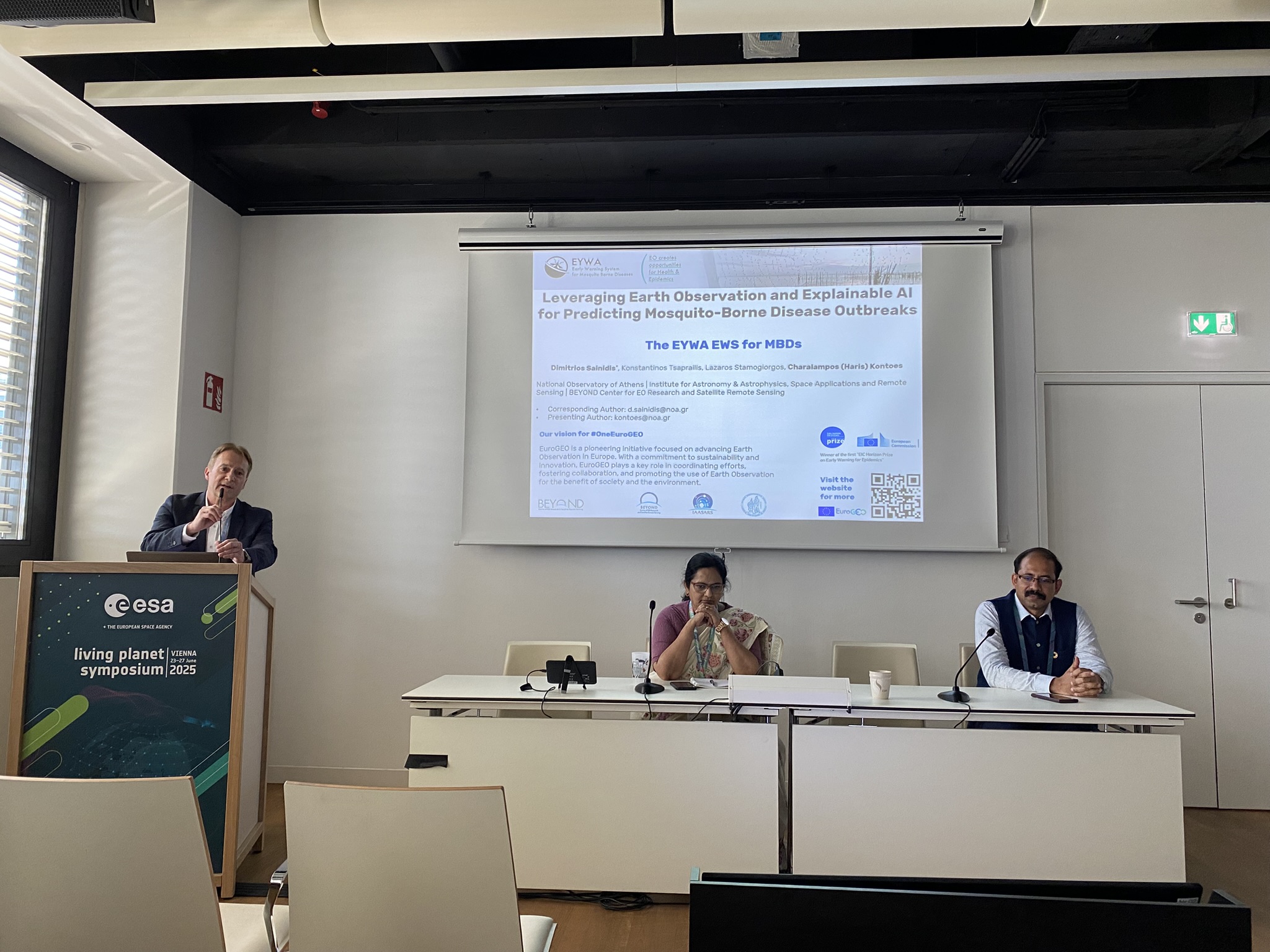BEYOND Centre of Excellence of ISAARS/NOA made a dynamic mark at this year’s Living Planet Symposium 2025, hosted by the European Space Agency (ESA) in Vienna, from the 23rd to the 27th of June. As one of the world’s premier Earth Observation (EO) forums, the event gathered leading scientists, institutions, and space stakeholders to share breakthroughs in environmental monitoring, Artificial Intelligence (AI), and satellite technologies.
Kicking off the Centre’s presence, Dr. Haris Kontoes, Research Director at IAASARS/NOA, presented groundbreaking work on Leveraging Earth Observation Data and Explainable AI for Predicting Mosquito-Borne Disease Outbreaks (Session B.03.06), underscoring the growing role of AI in public health surveillance.
In total, BEYOND researchers contributed with 11 scientific presentations, showcasing their excellence across disaster risk reduction, epidemic surveillance, climate resilience, and advanced EO services.
Oral Presentations also included:
- Martha Kokkalidou, presenting Detailed Geological Mapping of the State of Qatar at Various Mapping Scales by Combining Multi-Spectral Sentinel-2 Imagery with Very High Spatial Resolution Pleiades Imagery (Session A.10.01).
Poster Presentations featured:
- Mariza Kaskara, presenting Holistic approach to flood risk assessment: innovative multi-parameter methodology validated in urban river basin affected by fatal flash flood and Landslides detection through remote sensing and ground truth investigations in Cyprus (Sessions B.04.05 and B.04.01).
- Rizos-Theodoros Chadoulis, who showcased Destination Renewable Energy: Renewable Energy Forecasting on DestinE platform using Digital Twin data (Session D.01.03).
- Valentina Kanaki, presenting on Deep Learning Techniques to Enhance Spatial Resolution of Thermal Imagery for Fire and Cloud Detection (Session D.02.11).
- Martha Kokkalidou, presenting her work on PSI and SBAS Based InSAR Processing of Sentinel-1 Time Series for Assessing Surface Velocity Patterns and Precursor Land Subsidence due to Collapse of Underground Cavities in the State of Qatar (Session B.04.01).
- Stella Girtsou, highlighting Deep Learning for Fire Risk Prediction: Application of Metric Learning and Explainability Methods (Session D.02.04).
- Nikolaos Stasinos, who contributed two key posters: InSAR and Machine Learning for Landslide Susceptibility Mapping in Western Greece and Leveraging GIS and Satellite Remote Sensing for Earthquake Susceptibility Mapping and Disaster Management Planning at the wider area of Ancient Olympia archaeological site (Sessions B.04.04, and B.03.05).
BEYOND’s strong presence at LPS2 reinforces its role as a driving force in the Earth Observation community. From cutting-edge AI applications to real-time risk assessment tools, BEYOND continues to bridge science and society—delivering data-driven solutions for climate action, disaster resilience, and sustainable development across Europe and internationally.
ℹ️ More information about this year’s Symposium: https://lps25.esa.int/

